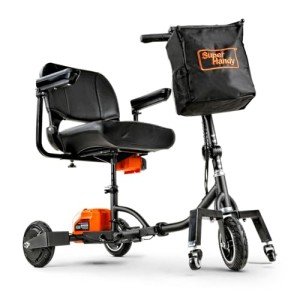Understanding Mobility Aids: Enhancing Independence and Quality of Life
As society continues to age and people increasingly seek methods to keep self-reliance, the need for mobility aids has never been more important. Mobility aids, which encompass a series of devices created to assist people with strolling or walking around, play a vital function in promoting mobility, improving security, and enhancing total lifestyle. This article will explore the various kinds of mobility aids, their advantages, considerations for selection, and respond to some regularly asked concerns.
Types of Mobility Aids
Different mobility aids are offered, each created to address specific needs. The following table summarizes some of the most common types of mobility aids and their functions.
| Type of Mobility Aid | Description | Best Suited For | Key Features |
|---|---|---|---|
| Walking sticks | A portable stick offering assistance and balance. | People who require very little support. | Light-weight, portable, adjustable height. |
| Walkers | Four-legged frames supplying stability. | Those needing substantial support while strolling. | Foldable, some with wheels, included safety functions. |
| Rollators | Wheeled walkers with a seat for resting. | Individuals needing mobility with the alternative to rest. | Brakes, baskets for individual products, adjustable height. |
| Wheelchairs | Chairs with wheels for individuals with restricted mobility. | Those unable to walk or needing comprehensive assistance. | Handbook or powered choices, customizable seating. |
| Scooters | Motorized devices for bigger ranges. | People with limited endurance however needing independence. | Various sizes and designs, frequently transportable. |
| Crutches | Support devices positioned under the arms or lower arms. | Individuals recuperating from lower limb injuries. | Adjustable, lightweight, needs upper body strength. |
| Stairlifts | Mechanical devices for moving in between floorings. | Users facing difficulties in multi-level homes. | Adjustable for different staircases, automated. |
Benefits of Mobility Aids
Mobility aids offer a range of benefits that can substantially boost the lives of people dealing with mobility difficulties. Some significant advantages consist of:
- Increased Independence: Mobility aids empower people to move freely without counting on others for support, thus improving their self-confidence and self-esteem.
- Enhanced Safety: Using mobility aids can minimize the danger of falls and injuries, especially for older adults or those with balance concerns.
- Improved Quality of Life: By assisting in mobility, individuals can participate in social activities, attend occasions, and enjoy life more fully, adding to much better emotional and psychological health.
- Rehabilitation Support: After surgery or injury, mobility aids provide required assistance and stability, helping in recovery and rehab procedures.
- Ease of access: Many mobility aids are designed to be used both inside your home and outdoors, ensuring that people can navigate various environments with ease.
Factors to Consider When Choosing Mobility Aids
Choosing the appropriate mobility help needs cautious consideration of numerous elements, including:
| Factor | Considerations |
|---|---|
| User's Needs | Assess the level of mobility needed; think about whether the user requires short-lived or long-term support. |
| Physical Limitations | Assess the user's strength, balance, and coordination to identify the very best type of help. |
| Setting | Think about the main environments where the help will be used, such as home, outdoors, or particular surfaces. |
| Weight and Portability | Ensure that the picked device is manageable relating to portability and storage, especially for outdoor usage. |
| Spending plan | Mobility aids come in a series of rates; think about insurance coverage and offered funding choices. |
| Adjustability | Choose aids that can be adjusted for height and comfort to accommodate growth or altering needs. |
Often Asked Questions About Mobility Aids
1. How do I understand if I need a mobility aid?
Many elements can signify the need for a mobility aid, such as trouble walking or stabilizing, fatigue while standing, or a recent surgical treatment affecting mobility. Consulting with visit the next web page can supply guidance tailored to private needs.
2. What kinds of mobility aids are covered by insurance?
Protection differs between insurance companies, but many supply choices for long lasting medical devices, which generally includes wheelchairs, walkers, and some kinds of walking sticks. Check with your insurance coverage supplier for particular protection info.
3. Can mobility aids be utilized outdoors?
Yes, numerous modern-day mobility aids are created for outdoor usage. Rollators, scooters, and some walkers are equipped with features for stability and ease of usage on different terrain.
4. How do I preserve my mobility aid?
Routine upkeep includes looking for any wear and tear, ensuring that parts such as wheels, brakes, and frames are operating properly, and cleaning the equipment as required. Following the maker's standards is vital for safety.
5. Exists a threat of ending up being dependent on mobility aids?
While some users might become reliant on mobility aids, they are created to promote self-reliance and mobility. Slowly using a mobility aid can improve self-confidence and assistance maintain physical strength and coordination.
Mobility aids are important tools that empower people to conquer physical obstacles, promoting self-reliance and boosting lifestyle. By comprehending the different types of mobility aids offered, their benefits, and crucial factors for consideration, families and caregivers can make informed decisions that best satisfy the needs of their loved ones. With the ideal assistance, those with mobility challenges can lead satisfying and active lives, totally free to check out the world around them.

